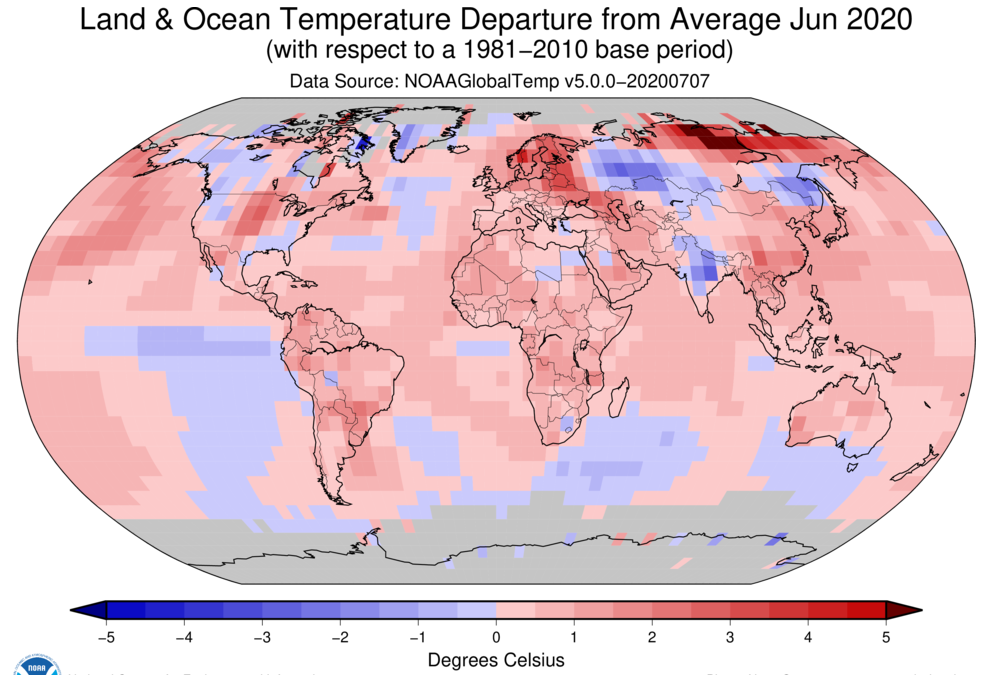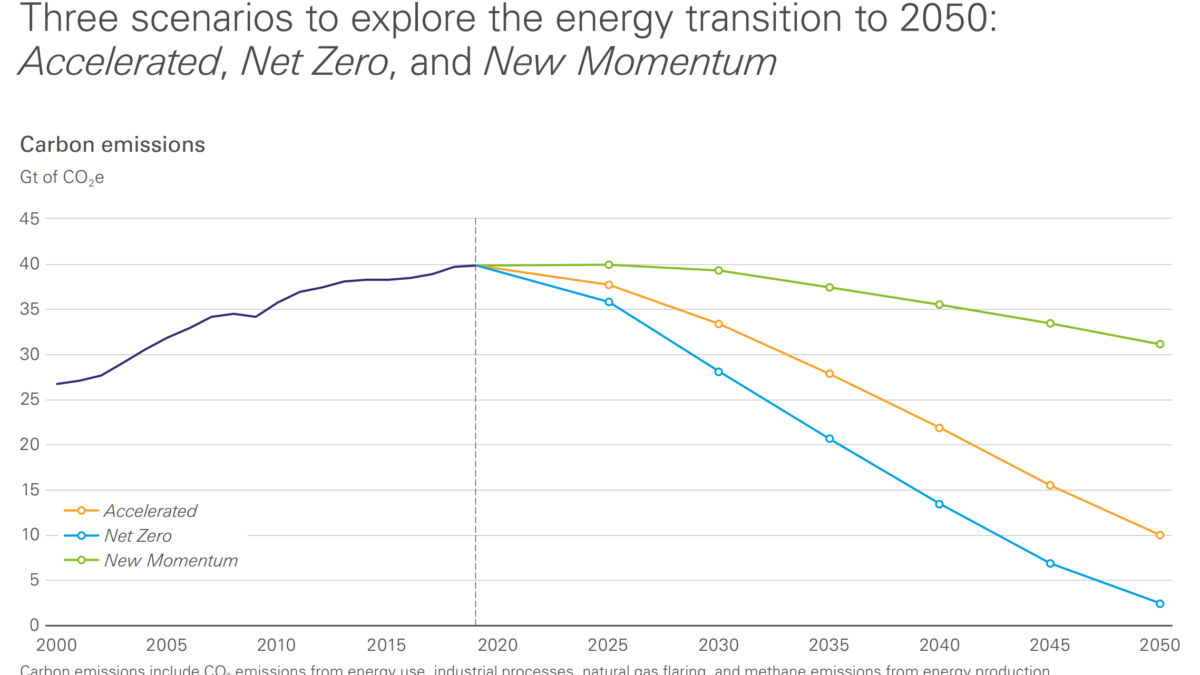Methane emitted via human fossil fuel use “vastly underestimated”
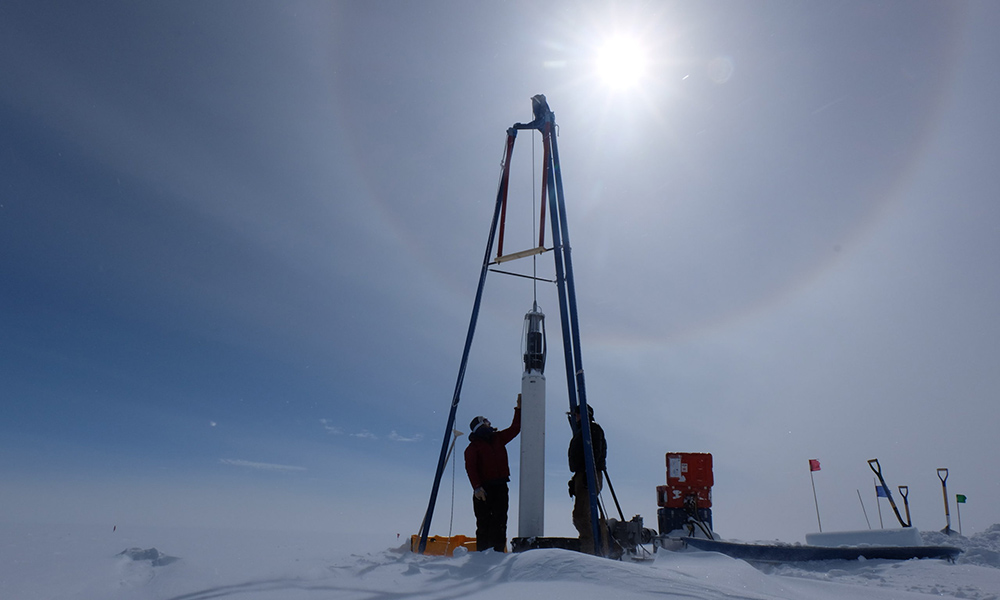
By Lindsey Valich
19 February 2020
(University of Rochester) – Methane is a powerful greenhouse gas and large contributor to global warming. Methane emissions to the atmosphere have increased by approximately 150 percent over the past three centuries, but it has been difficult for researchers to determine exactly where these emissions originate; heat-trapping gases like methane can be emitted naturally, as well as from human activity.
University of Rochester researchers Benjamin Hmiel, a postdoctoral associate in the lab of Vasilii Petrenko, a professor of earth and environmental sciences, and their collaborators, measured methane levels in ancient air samples and found that scientists have been vastly underestimating the amount of methane humans are emitting into the atmosphere via fossil fuels. In a paper published in Nature, the researchers indicate that reducing fossil fuel use is a key target in curbing climate change.
“Placing stricter methane emission regulations on the fossil fuel industry will have the potential to reduce future global warming to a larger extent than previously thought,” Hmiel says.
Two types of methane
Methane is the second largest anthropogenic—originating from human activity—contributor to global warming, after carbon dioxide. But, compared to carbon dioxide, as well as other heat-trapping gases, methane has a relatively short shelf-life; it lasts an average of only nine years in the atmosphere, while carbon dioxide, for instance, can persist in the atmosphere for about a century. That makes methane an especially suitable target for curbing emission levels in a short time frame.
“If we stopped emitting all carbon dioxide today, high carbon dioxide levels in the atmosphere would still persist for a long time,” Hmiel says. “Methane is important to study because if we make changes to our current methane emissions, it’s going to reflect more quickly.”
Methane emitted into the atmosphere can be sorted into two categories, based on its signature of carbon-14, a rare radioactive isotope. There is fossil methane, which has been sequestered for millions of years in ancient hydrocarbon deposits and no longer contains carbon-14 because the isotope has decayed; and there is biological methane, which is in contact with plants and wildlife on the planet’s surface and does contain carbon-14. Biological methane can be released naturally from sources such as wetlands or via anthropogenic sources such as landfills, rice fields, and livestock. Fossil methane, which is the focus of Hmiel’s study, can be emitted via natural geologic seeps or as a result of humans extracting and using fossil fuels including oil, gas, and coal.
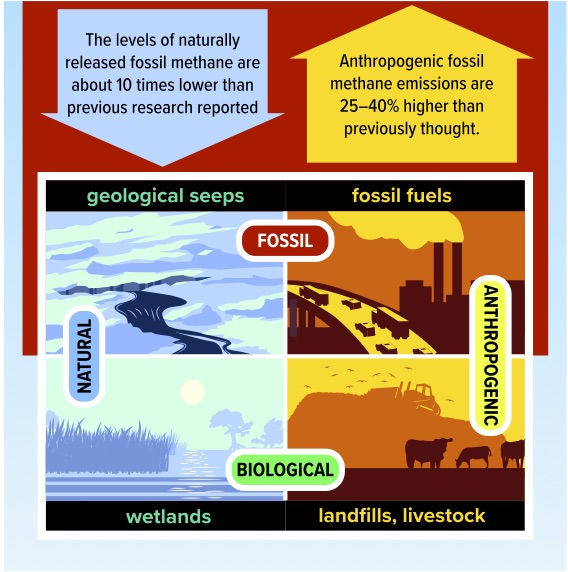
Scientists are able to accurately quantify the total amount of methane emitted to the atmosphere each year, but it is difficult to break down this total into its individual components: Which portions originate from fossil sources and which are biological? How much methane is released naturally and how much is released by human activity?
“As a scientific community we’ve been struggling to understand exactly how much methane we as humans are emitting into the atmosphere,” says Petrenko, a coauthor of the study. “We know that the fossil fuel component is one of our biggest component emissions, but it has been challenging to pin that down because in today’s atmosphere, the natural and anthropogenic components of the fossil emissions look the same, isotopically.”
Turning to the past
In order to more accurately separate the natural and anthropogenic components, Hmiel and his colleagues turned to the past, by drilling and collecting ice cores from Greenland. The ice core samples act like time capsules: they contain air bubbles with small quantities of ancient air trapped inside. The researchers use a melting chamber to extract the ancient air from the bubbles and then study its chemical composition.
Hmiel’s research expands on previous research conducted by Petrenko, but is focused on measuring the composition of air from the early 18th century—before the start of the Industrial Revolution—to the present day. Humans did not begin using fossil fuels in significant amounts until the mid-19th century. Measuring emission levels before this time period allows researchers to identify the natural emissions absent the emissions from fossil fuels that are present in today’s atmosphere. There is no evidence to suggest natural fossil methane emissions can vary over the course of a few centuries.
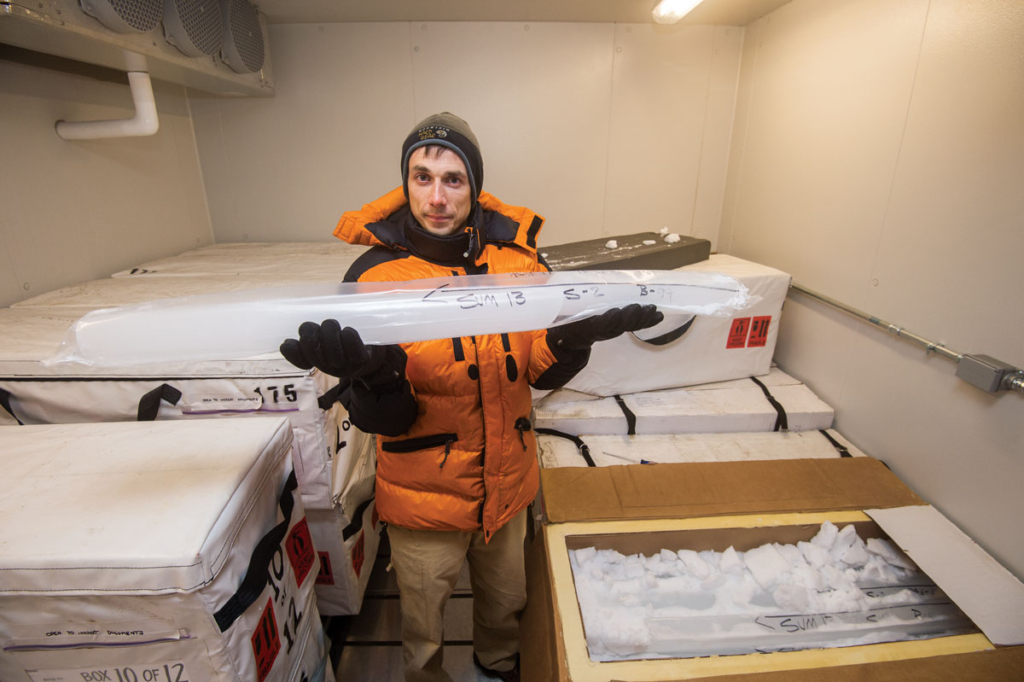
By measuring the carbon-14 isotopes in air from more than 200 years ago, the researchers found that almost all of the methane emitted to the atmosphere was biological in nature until about 1870. That’s when the fossil component began to rise rapidly. The timing coincides with a sharp increase in the use of fossil fuels.
The levels of naturally released fossil methane are about 10 times lower than previous research reported. Given the total fossil emissions measured in the atmosphere today, Hmiel and his colleagues deduce that the manmade fossil component is higher than expected—25-40 percent higher, they found.
Climate change implications
The data has important implications for climate research: if anthropogenic methane emissions make up a larger part of the total, reducing emissions from human activities like fossil fuel extraction and use will have a greater impact on curbing future global warming than scientists previously thought.
To Hmiel, that’s actually good news. “I don’t want to get too hopeless on this because my data does have a positive implication: most of the methane emissions are anthropogenic, so we have more control. If we can reduce our emissions, it’s going to have more of an impact.”
This study was supported by the US National Science Foundation and the David and Lucille Packard Foundation and is a recent example of Rochester’s initiatives to better understand the global methane budget. Scientists from Rochester’s Department of Earth and Environmental Sciences have conducted field research in Antarctica, Greenland, the Great Lakes, and Earth’s oceans, and have used machine learning and climate models to advance an understanding of the potent greenhouse gas methane and the ways it affects global warming and climate change.
Methane emitted via human fossil fuel use ‘vastly underestimated’
Preindustrial 14CH4 indicates greater anthropogenic fossil CH4 emissions
ABSTRACT: Atmospheric methane (CH4) is a potent greenhouse gas, and its mole fraction has more than doubled since the preindustrial era1. Fossil fuel extraction and use are among the largest anthropogenic sources of CH4 emissions, but the precise magnitude of these contributions is a subject of debate2,3. Carbon-14 in CH4 (14CH4) can be used to distinguish between fossil (14C-free) CH4 emissions and contemporaneous biogenic sources; however, poorly constrained direct 14CH4 emissions from nuclear reactors have complicated this approach since the middle of the 20th century4,5. Moreover, the partitioning of total fossil CH4 emissions (presently 172 to 195 teragrams CH4 per year)2,3 between anthropogenic and natural geological sources (such as seeps and mud volcanoes) is under debate; emission inventories suggest that the latter account for about 40 to 60 teragrams CH4 per year6,7. Geological emissions were less than 15.4 teragrams CH4 per year at the end of the Pleistocene, about 11,600 years ago8, but that period is an imperfect analogue for present-day emissions owing to the large terrestrial ice sheet cover, lower sea level and extensive permafrost. Here we use preindustrial-era ice core 14CH4 measurements to show that natural geological CH4 emissions to the atmosphere were about 1.6 teragrams CH4 per year, with a maximum of 5.4 teragrams CH4 per year (95 per cent confidence limit)—an order of magnitude lower than the currently used estimates. This result indicates that anthropogenic fossil CH4 emissions are underestimated by about 38 to 58 teragrams CH4 per year, or about 25 to 40 per cent of recent estimates. Our record highlights the human impact on the atmosphere and climate, provides a firm target for inventories of the global CH4 budget, and will help to inform strategies for targeted emission reductions9,10.
Preindustrial 14CH4 indicates greater anthropogenic fossil CH4 emissions

